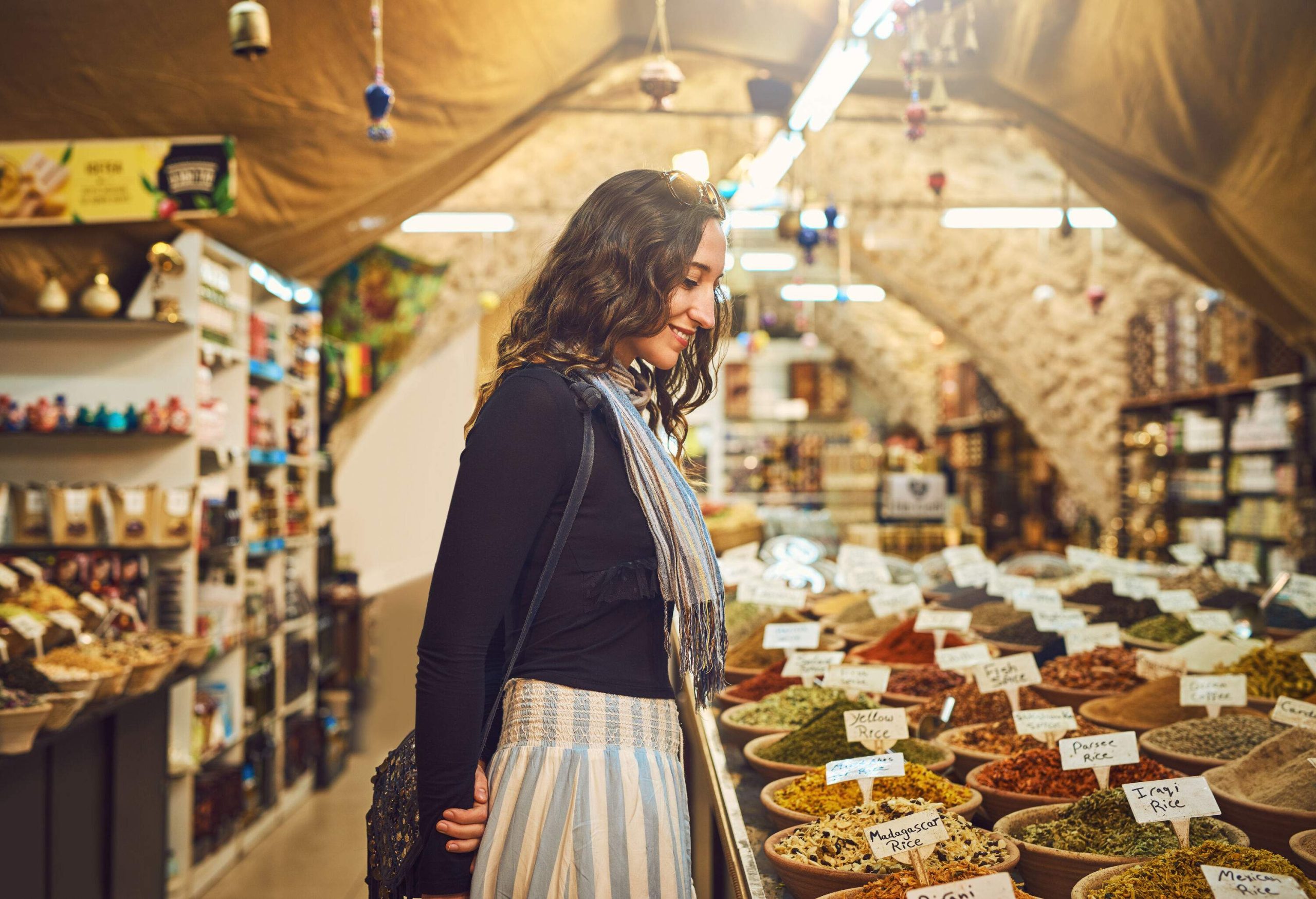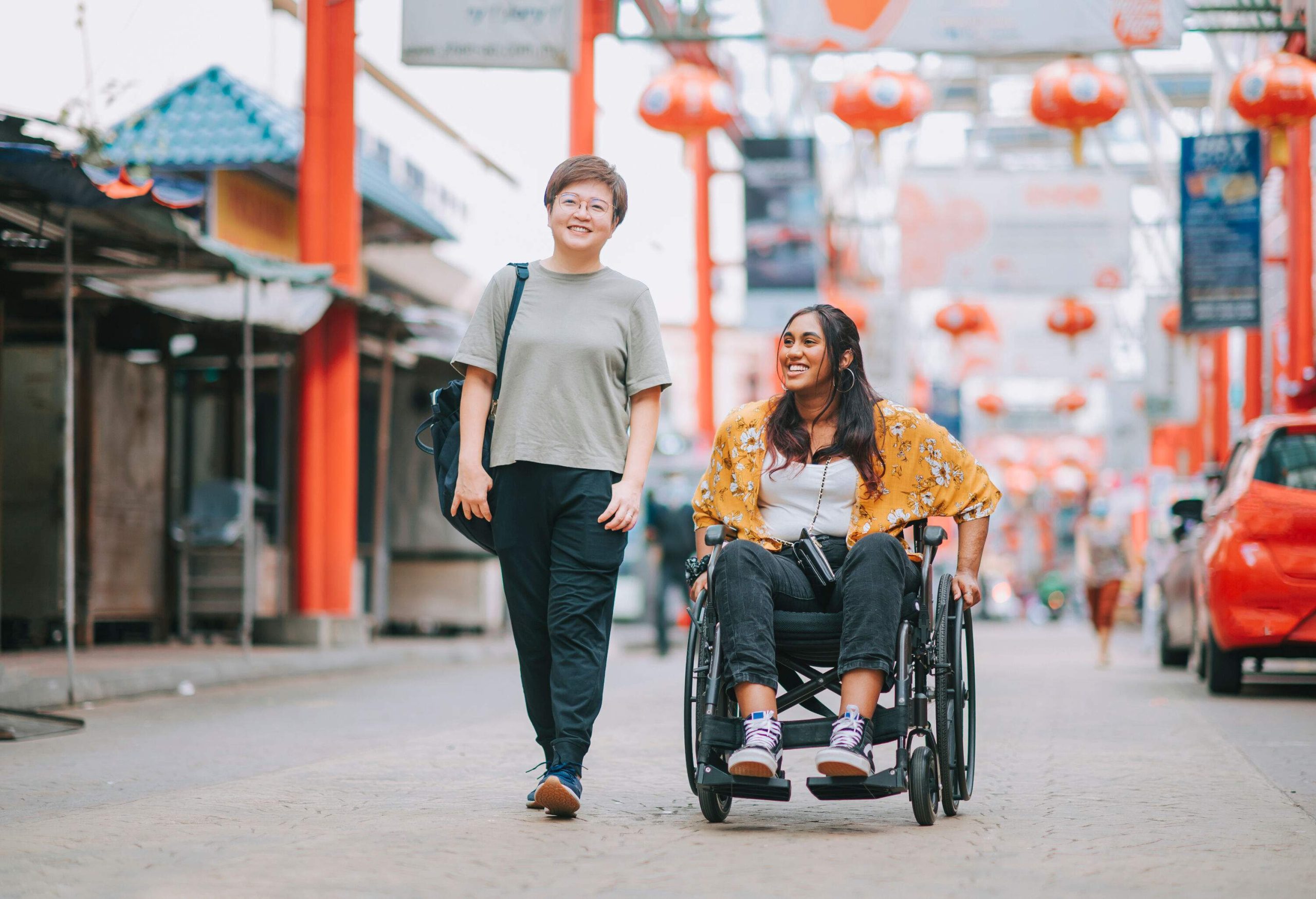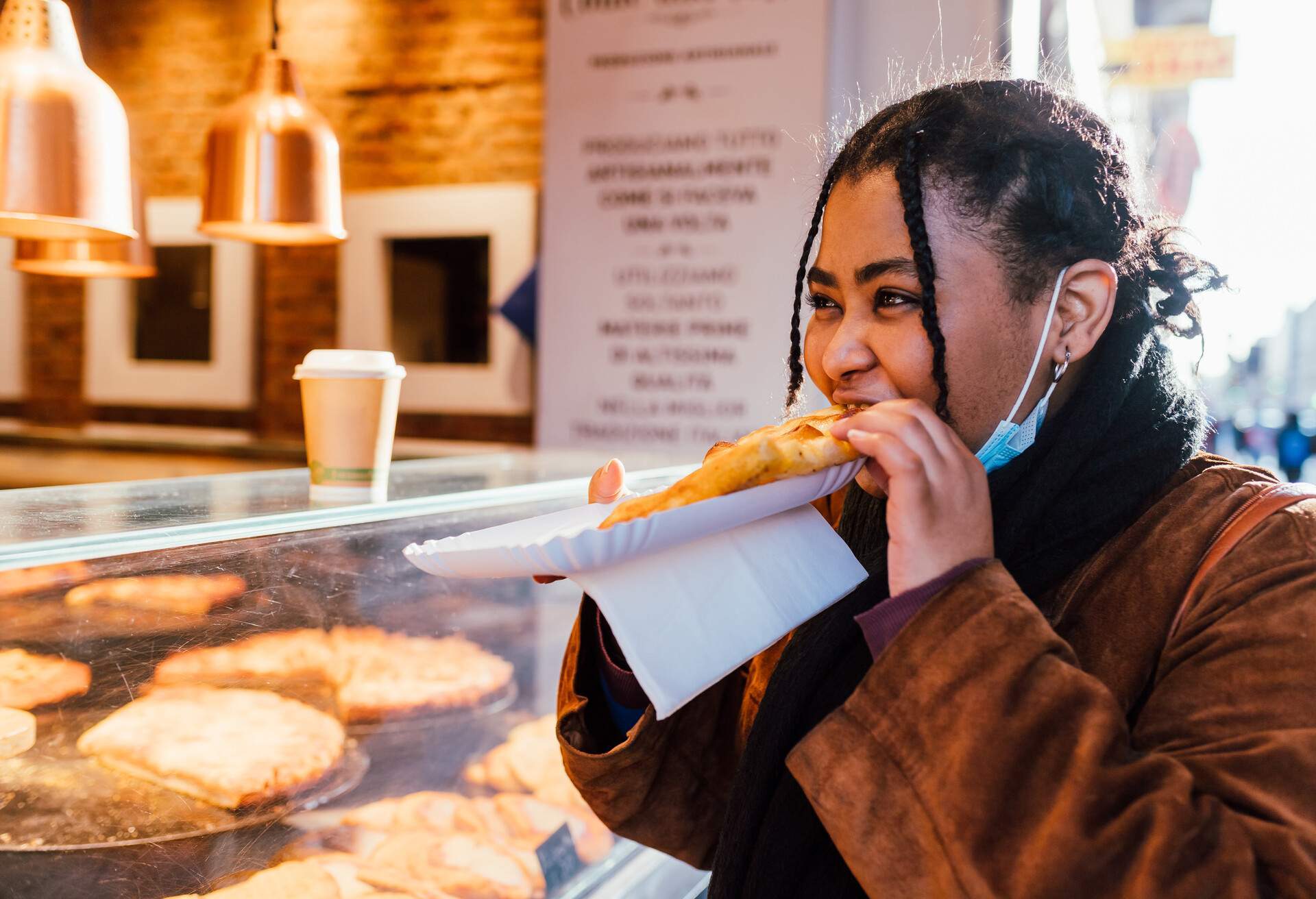The idea of eating away from home can be daunting for the first-time food allergy traveler. While most of us have experienced long road trips, flight delays and other travel inconveniences, food allergy families need to consider location, dining options, and even travel partners, before hitting the road or taking to the skies. We partnered with AllergyEats for their top tips on how to make allergy-friendly travel possible.
1. Consider the cuisine of your destination
Theme parks often come to mind first for most food allergy families considering a vacation, but cities – made up of diverse cultures, cuisines and restaurant concepts – are also great picks. Vegan cafes typically make good allergy-friendly choices for those allergic to eggs and milk, while egg-based pasta and creamy sauces can make Italian food more challenging for these same diners. Peanut- and tree nut –allergic diners often have good luck with these cuisines but still need to be mindful of garnishes, breading and salads. Families who have multiple allergies may find that steakhouses can usually accommodate them with a simple vegetable, potato and steak dish. Longing for a beach day? Consider seaside communities that serve up an abundance of fresh seafood, making it easy to avoid common allergens unless you are, of course, allergic. Lastly, land-lovers considering places where hiking and skiing are popular can likely find farm-fresh meats and vegetables that can easily be turned into a top 8-free dish (many food allergies are caused by 8 foods, top 8-free foods avoid these allergens).
2. Go local before you go global
If you’ve never gone out to eat in your own town, it could be intimidating to engage a food preparer for the first time in a place far away or out to sea on a cruise. Even the most seasoned food-allergic travelers come up against their allergens in unexpected places or are faced with less-than-accommodating chefs; the more comfortable you are asking questions, the more natural it will feel to you to do so. AllergyEats has resources with what questions to ask available on its site and app, and it can also help you find allergy-friendly restaurants near you or anywhere in the US. Another way to alert the restaurant of your allergens is Food allergy chef cards. These can be created in every language and are a must for traveling to foreign countries, but are not a replacement for an active conversation.
3. Choose your vacation partners wisely
If holidays or family get-togethers are stressful because someone in your family isn’t empathetic about your child’s – or your – allergies, consider asking for a separate unit or upgrading to a room with kitchen amenities. That way your family can still be part of things but have some control over meal prep. Even if another family member has made all the dining reservations, check in with the chef about your needs by dropping in during off-peak dining hours. Treats can be particularly hard when lots of little ones are gathered at a table, so bring along allergy-friendly sweets for a more inclusive end to nightly meals.
4. Resort versus rental
While many people think a vacation means having someone else cook and clean, for those in the food allergy community, the trade-off of not being in control of food preparation isn’t always worth the anxiety. A hotel that offers the perks like kids clubs, sightseeing excursions, accommodations with kitchens, and more can be the best of both worlds. Big brand name hotels generally use the same food suppliers across the US and can readily provide ingredient lists of premade or frozen products. Boutique hotels have the benefit of buying local and can typically share what other products (and therefore allergens) may be on-site. Travelers can also consider a rental in a place that’s a short distance to popular attractions with the peace of mind that you’re in control of your family’s meals.
5. Flying the allergy-friendly skies
When possible, take the first flight of the day to ensure the cleanest plane. For later flights or connections, use sanitizing wipes to clean seat belts, trays and armrests that may have been in contact with your allergens. Save room in your carry-on for small, non-perishable snacks like oatmeal packets, dried fruit, portable pasta or soup cups, and top 8 free granola bars – these come in handy for long flights and unexpected delays. If you’re concerned about access to your child’s go-to foods at your final destination, check with the airline about packing safe frozen bread or butter in a soft-sided cooler that’s easy to place in a suitcase along with shelf-stable items like pasta, rice and peanut butter alternatives. For the most up-to-date airline information, consult the individual carriers or check this comprehensive list of airline policies maintained by Allergic Living.
6. Avoid a rocky road trip
While packing up the car with kids and snacks may sound easier than taking to the skies, it still requires planning to go as smoothly as possible. Bring coolers for storing nibbles for the road or hard-to-find perishables that you’ll want for your vacation. If you have a favorite grocery store, look on their website for locations that may be on your driving route or in your final destination. National grocers often offer a variety of allergy-friendly goods and prepared foods so you can grab a quick bite on the road or phone them in advance to hold staple items. You can plan ahead for places to eat on the road by using apps like AllergyEats, which offers reviews of restaurants from other food-allergic diners with allergies to the top 8, sesame and gluten. You can also use their app to bookmark a few places to dine at your final destination.
7. Double up on emergency medications
If your circumstances require emergency medications, get refills on inhalers and epinephrine so you’ll have extras with you at all times on your trip. Your instinct may be to keep a set on you and one in a suitcase but consider asking a teenage or adult family member to hold a set, too. Be mindful that temperatures inside your car can rise easily in the summer or dip low in the winter, so it’s imperative to carry medications with you and not reduce their efficacy by storing them in a glove compartment, car trunk or airplane cargo. If you are traveling alone or through areas where your native language isn’t spoken, it’s also wise to wear a medical ID bracelet or carry a medical alert card.
Once you’ve decided on a destination and a travel plan, take a look at our 8 tips for managing food allergies on a family vacation to get the most out of your resort or rental home.
Legal Disclaimer: All content found in this blog post is for informational purposes only. The content is not intended to be a substitute for professional medical advice, diagnosis, or treatment. Always seek the advice of your physician or other qualified health providers with any questions you may have regarding a medical condition. Never disregard professional medical advice or delay in seeking it because of something you have read in this blog. The content in this blog is provided on an “as is” basis and any reliance on any information provided is solely at your own risk.
In partnership with

About AllergyEats
AllergyEats aims to help food-allergic and food-intolerant diners quickly and easily find restaurants that will properly accommodate their individual dietary needs. It was created after its founder, Paul Antico, struggled to find restaurant options for his family of 7 – with 3 food-allergic kids. Now, AllergyEats is the dominant guide to finding allergy-friendly restaurants across the United States.






